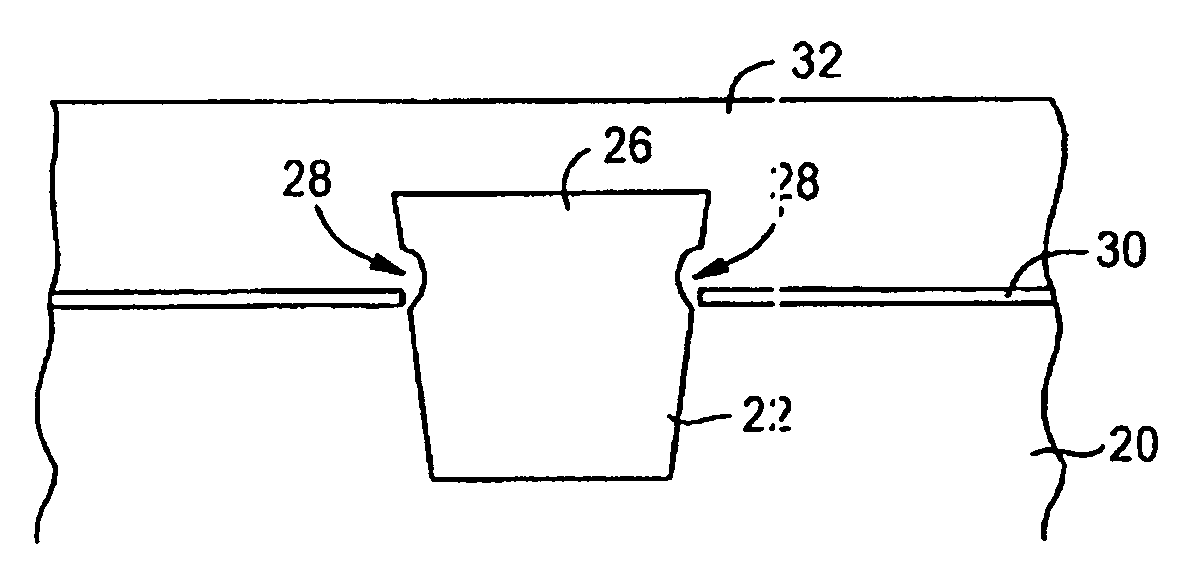Method of forming a semiconductor arrangement with reduced field-to active step height
a semiconductor and step height technology, applied in semiconductor/solid-state device manufacturing, basic electric elements, electric devices, etc., can solve problems such as “stringer” defects, photolithographic patterning or etch considerations, and pattern integrity issues of polysilicon gate patterns, and achieve the effect of reducing the step heigh
- Summary
- Abstract
- Description
- Claims
- Application Information
AI Technical Summary
Benefits of technology
Problems solved by technology
Method used
Image
Examples
Embodiment Construction
[0014]The present invention addresses problems related to the step height created during STI formation and polishing in conventional STI formation methodologies. This reduction in the step height is achieved by the formation of a planarizing dielectric layer on the substrate and the field oxide, followed by a planarization step. This reduces or eliminates the field-to-active step height prior to the gate oxidation and polysilicon deposition steps in the semiconductor manufacturing process. This has a desirable effect on the photolithographic patterning and etch steps to improve pattern integrity and increase operating speed, with also improved yield and precision in formation.
[0015]FIG. 2 schematically depicts a cross-section of a portion of a semiconductor wafer during formation of an STI arrangement in accordance with embodiments of the present invention. A silicon substrate 20 is provided with a trench 22 that has been filled with a suitable insulating (or isolating) material 26 ...
PUM
 Login to View More
Login to View More Abstract
Description
Claims
Application Information
 Login to View More
Login to View More - R&D
- Intellectual Property
- Life Sciences
- Materials
- Tech Scout
- Unparalleled Data Quality
- Higher Quality Content
- 60% Fewer Hallucinations
Browse by: Latest US Patents, China's latest patents, Technical Efficacy Thesaurus, Application Domain, Technology Topic, Popular Technical Reports.
© 2025 PatSnap. All rights reserved.Legal|Privacy policy|Modern Slavery Act Transparency Statement|Sitemap|About US| Contact US: help@patsnap.com



